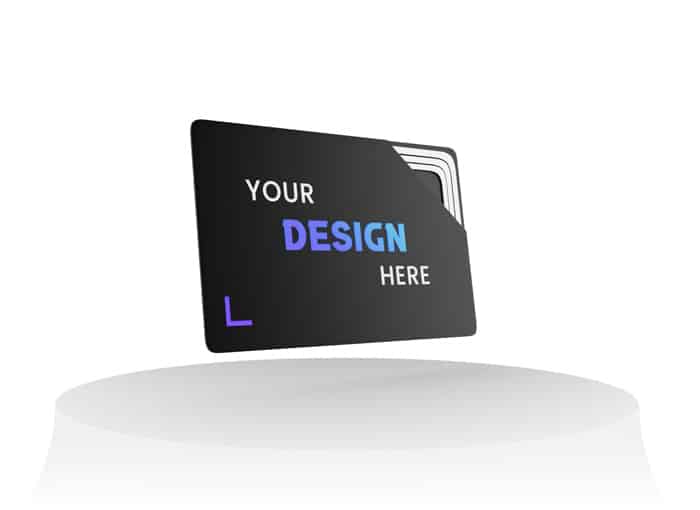
Why are connected business cards becoming the must-have tool for professionals of the future?

Different technologies for connected business cards: NFC, RFID and QR code
It’s a fact: connected business cards take advantage of technological advances to offer innovative, high-performance solutions.
In particular, NFC, RFID and QR code technologies are playing a key role in this evolution, offering fast, efficient ways of exchanging business information while maintaining a high level of security.
Of course, traditional business cards are far from being able to provide the same level of information.
That’s why the new media are taking more and more market share… and why you should take a closer look at them, if you want to boost your communication!
NFC (Near Field Communication): this technology enables contactless data exchanges between two compatible devices over short distances. It is used in particular for mobile transactions and secure information sharing.
According to Stéphane M., sales manager at a major bank, “the use of NFC in connected business cards greatly facilitates the exchange of information at trade shows and professional events. We really appreciate it!
NFC technology enables :
- ease of use
- speed of transfer
- secure data exchange thanks to encryption and authentication protocols (source: NFC Forum
RFID (Radio Frequency Identification): similar to NFC, RFID technology uses radio waves to transmit data between a chip and a compatible reader.
Business cards equipped with RFID chips enable fast, contactless information sharing.
An RFID chip can :
- read several chips simultaneously
- have a wider reading range than NFC (source: RFID Journal)
As for the now well-known QR code (Quick Response code), these are two-dimensional barcodes that can be scanned with a simple smartphone to access information or a website.
Business cards with QR codes make it easier to share business contact details and enhance interactivity between different contacts, without requiring everyone to own a latest-generation phone.
The main advantages of QR codes are :
- compatibility with most smartphones
- ability to store large quantities of information
- easy updating of data in the event of a change: all you have to do is go to your online customer area to modify the information.
By adopting these tools, professionals can optimize their information exchanges and reinforce their brand image with partners and customers.
Data security and protection: a major challenge for connected business cards
We live in an age of cyber-threats and privacy breaches.
So the security of personal and business information is a crucial issue!
Connected business cards combining technologies such as NFC, RFID and QR code, offer innovative solutions to protect your data while making it easier to share important information.
NFC (Near Field Communication) technology enables data exchanges between two compatible devices over short distances, generally less than ten centimeters.
This proximity limits the risk of data interception during transfer.
What’s more, the NFC chip incorporates encryption and authentication protocols to secure data and guarantee access only to authorized persons (source: NFC Forum).
RFID (Radio Frequency Identification) chips operate on a similar principle, using radio waves to transmit data. To ensure information security, they can be coupled with encryption and authentication protocols (source: RFID Journal).
As for QR codes, although they generally store data without any particular encryption, it is possible to add a layer of security by opting for “dynamic” QR codes, which redirect to a web page protected by a password or authentication.
Samantha, an IT security consultant with a French group, comments: ” Connected business cards offer an excellent compromise between accessibility and data protection. They make it easy to share business contact details while ensuring the security of sensitive information.”
What’s more, some virtual business card solutions offer data access control features, making it possible to determine precisely who can view what information and for how long (source: Moo.com).
Connected business cards therefore combine performance and security, enabling you to develop your professional network with complete peace of mind. By adopting these tools, you not only guarantee the protection of your data, but also that of your partners and customers.
Digital business cards? A responsible choice for the environment!
With growing awareness of the environmental impact of our lifestyles, digital and connected business cards offer an eco-responsible alternative to traditional paper business cards.
Professionals who use these new media are helping to reduce their ecological footprint while maintaining particularly effective communication.
Digital business cards, based on technologies such as NFC, RFID or QR code, do not require the use of plant fibers for their manufacture.
As a result, their use helps to reduce the consumption of natural resources and the production of waste.
According to ADEME, the manufacture of one tonne of paper requires 2.5 tonnes of wood and consumes 300 m³ of water (source: ADEME)!
Using digital business cards also reduces the production of CO₂ linked to the transport and distribution of traditional cards.
As Thomas, a Web technology entrepreneur and fervent environmentalist, points out, “I chose to use digital business cards for my company, because they correspond to my ecological values. What’s more, they make it easier to share information and help me stand out to my customers.”
Connected business cards also have less impact on the environment when it comes to updating information.
In fact, instead of throwing away and printing new cards each time contact details change, digital cards allow data to be modified online, without generating additional waste.
Finally, some connected business card companies adopt an eco-responsible approach by using recycled and recyclable materials to manufacture NFC chips and QR code carriers, thus minimizing the ecological impact of their production (source: MOO).
In short, digital and connected business cards offer an ecological and responsible alternative to traditional cards.
By adopting these tools, professionals are helping to preserve the environment while standing out to their partners and customers.
This is in line with the evolution of our society…
Advantages and benefits of virtual business cards for your brand image and network
Virtual business cards are becoming increasingly popular with professionals who are concerned about their brand image and the effectiveness of their network.
By combining high technology and practicality, these cards offer undeniable advantages for standing out and optimizing information exchanges compared with traditional paper cards.
We have listed some of the main advantages of virtual business cards:
- Eco-responsibility: by adopting digital cards, you help reduce the consumption of natural resources and the production of waste associated with traditional business cards.
- Easy updating: virtual cards enable you to modify data online, simply by logging on to your customer area, without generating additional waste.
- Data security: thanks to NFC, RFID and QR code technologies, virtual business cards ensure effective protection of sensitive information.
According to Mathieu, marketing director of a sporting goods company: “Virtual business cards have revolutionized the way I network. They have enabled me to stand out to my customers and partners, while making it easier to share information and reinforcing my eco-friendly brand image.”
To make the most of virtual business cards, it’s important to be well supported and to choose a quality partner, such as VKARD.
Specializing in connected business cards, VKARD offers innovative, customized solutions to meet the specific needs of every professional.
To conclude
To sum up, virtual business cards offer many advantages for your brand image and your network.
By adopting these tools, you are taking an innovative and eco-responsible approach, while optimizing the quality of professional information exchanges.
Partners such as VKARD can support you in this approach, offering connected solutions tailored to your needs and image.
By adopting these innovative tools for your day-to-day professional life, you’re following the trends of the future, and in particular Web 3.0: your brand becomes the center of an ecosystem, and your network becomes part of a resolutely multi-connected dynamic…
An excellent way to develop even more contacts!
Written by Camille BODET
The digital business card is a real ally for professionals wishing to promote their business effectively and instantly. In the...Lire la suite
VKARD is an innovative and effective solution to help all professionals stand out from the crowd and reinforce their brand...Lire la suite
If you prepare properly for a job interview, you'll have every chance of winning over the recruiter and getting the...Lire la suite
LinkedIn is a world-renowned business platform, and for good reason! Thanks to its many networking options, LinkedIn is the tool...Lire la suite
Find out how Leexi AI optimizes the management of videoconferences and business calls, saving time and improving efficiency.
In the professional sphere, it's vital to know how to convey certain strong values in order to stand out and...Lire la suite
Mastering the art of conversation is a real asset! By mastering the subtle art of conversation, you'll be able to...Lire la suite
Are you taking part in a trade event and want to do everything you can to make a good impression?...Lire la suite
CRM (Customer Relationship Management) represents a genuine corporate strategy for managing business contacts. This popular tool for professionals is in...Lire la suite
At a time when the professional world is in a perpetual state of competition, we might wonder what place altruism,...Lire la suite















